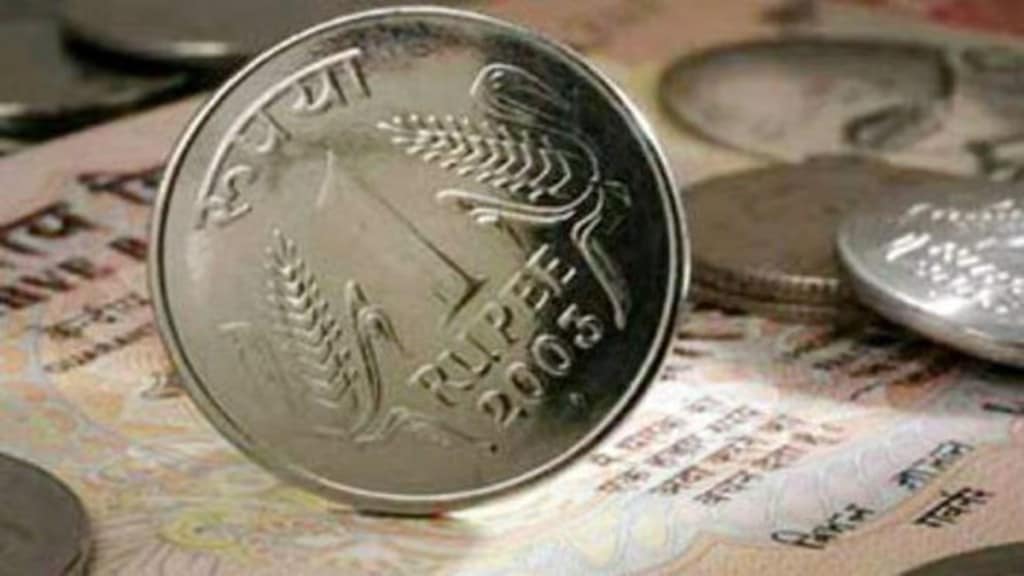By Jamal Mecklai
In January, about a week before Donald Trump took charge as President, the rupee started tumbling dramatically, falling through 86 to the dollar. I had written a piece (tinyurl.com/4ckr27dp), where I said: “My guess is we will, but…”
The last three months have seen a riot of volatility across the globe, and, as the chart shows, the rupee was no exception. Rupee volatility shook off years or torpor and shot straight upwards, crossing 4.5%, a level not seen in nearly two years. However — and while acknowledging that forecasting anything, let alone volatility, is a fool’s errand — the chart does seem to suggest that this particular storm may be abating. The two dark lines appear to show that the rupee is trying to get into a range centred around (why not?) 85 to the dollar.
Of course, the rupee is, thank God, a protected currency — all those erudite market mavens (self included, till a few years ago) who were aggressively pushing for capital account convertibility should be grateful that stodgy old Reserve Bank of India knew better. Other currencies and, worse, financial assets like equities and bonds are still suffering serious tremors — the NASDAQ, while it has recovered from its correction (peak-to-trough decline of 25%), doesn’t look out of the woods yet.
The market — US treasuries, in particular — has rapped Trump on the knuckles, but he remains, at least in rhetoric, still loud and foolish. His most recent inanity was to attack Fed Chairman Jerome Powell: “If we had a Fed chairman that understood what he was doing, interest rates would be coming down too.” He is also reportedly assessing whether he can remove Powell from office.
My sense is that he knows — or some people around him know — that if he did that the market would really snarl, so I don’t think that will happen. As it is, he is already coming under a lot of pressure from the US Supreme Court on the deportations, and there is much concern, both legally and otherwise, about his targeting of academic institutions and law firms. But, while the liberal media and many, many Americans (and, of course, people the world over) are freaking out, many people who voted for Trump still appear to support him. The ultra-liberal New York Times interviewed 11 independents and all of them said they don’t regret voting for Trump; some of them were a bit cautious but mostly they said he’s doing what he said he would. To be sure, he’s been in office for less than 100 days, and the full pain of much of what he has started hasn’t filtered down yet, but there it is.
However, the market is not a voter. It simply assesses risk and if the risk gets too high, it bails out. The shivers felt in the treasury market last week, while frightening, were still mild by historic standards. While the CBOE VIX in April was more than twice its level in November 2024, it was still far, far lower than what it was in November-December 2021, and infinitely lower than its level at the peak of the Covid crisis. But, we are far from the end of this episode. The impact of even the current push-me-pull-you tariffs (and DOGE and deportations and God knows what else) have not yet been fully felt.
And, most critically, treasury volatility is not a serpent you want to tempt. But Trump is unable to keep his mouth shut, and China and even the European Union aren’t quiet either. So, it’s hard to see how more trauma can be avoided globally.
So, while the rupee does appear to be currently becalmed (relatively speaking), we need to recognise that it could break out at any moment. While for many the downside (weaker rupee) is always yawning deeper, the dollar is continuing to follow my predictions (tinyurl.com/3zw658jb) with the DXY already below 100 and targeting 97; further, there appears to be a renewed interest among global investors in Indian equities, so it may be possible for the rupee to move even above 85.
In such an environment, companies need to grit their teeth and either close off their risk completely (which is also dangerous since business flows are becoming uncertain) and/or learn about paid option structures that can fix your worst case at today’s forward rate but provide you some value if the market ends up moving in favour of your exposures.
Banks are marketing an interesting product called forward extra which we believe can be useful for companies who have the cash flow wherewithal to pay an upfront price.
The writer is CEO, Mecklai Financial.
Disclaimer: Views expressed are personal and do not reflect the official position or policy of FinancialExpress.com. Reproducing this content without permission is prohibited.

